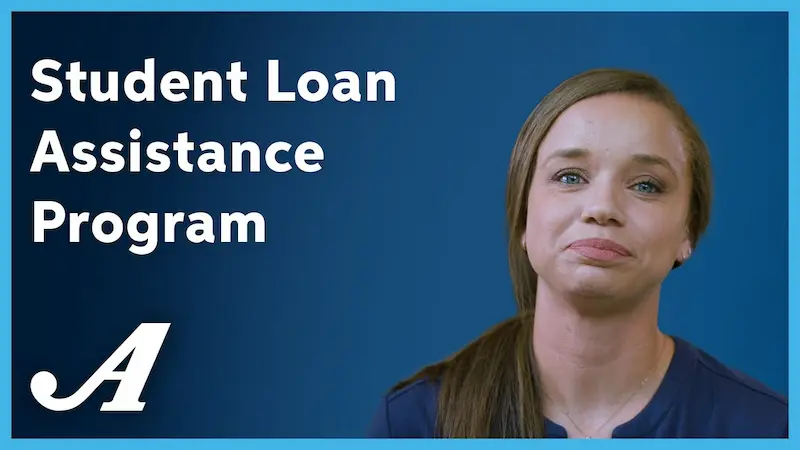If you’re feeling overwhelmed by student debt, you’re not alone. In 2025, student loans continue to be a major financial challenge for millions of borrowers. Fortunately, student loan assistance programs 2025 are available to help you manage payments, reduce balances, and even get debt forgiven under certain circumstances. Whether you’re struggling to make monthly payments or planning ahead for repayment, understanding these programs can save you a lot of stress—and money.
This guide is designed to break down everything you need to know in a friendly, easy-to-understand way.
What Are Student Loan Assistance Programs?

Student loan assistance programs are initiatives offered by the federal government, state governments, or private lenders to help borrowers manage or reduce their student debt. These programs are not one-size-fits-all—they are tailored to your specific financial situation, employment, and type of loan.
The main goal of these programs is to make your loans more manageable. Assistance can come in the form of:
- Loan forgiveness – Canceling part or all of your loan after meeting certain requirements.
- Income-driven repayment plans – Adjusting your monthly payment based on your income.
- Refinancing or consolidation – Combining multiple loans into one to reduce interest rates.
- Emergency relief programs – Short-term help if you face financial hardship.
Types of Student Loan Assistance Programs in 2025
In 2025, borrowers have several options depending on their employment, income, and loan type. Here’s a detailed look at the major programs:
1. Federal Student Loan Forgiveness Programs
Federal loan forgiveness programs are the most well-known type of student loan assistance. Some of the most important programs include:
Public Service Loan Forgiveness (PSLF)
- Designed for borrowers working full-time in government or nonprofit jobs.
- Forgives remaining balances after 120 qualifying monthly payments (about 10 years).
- Works best if you’re consistent with payments and maintain eligible employment.
Teacher Loan Forgiveness
- Teachers who work in low-income schools for five consecutive years can qualify.
- Forgiveness amounts can reach up to $17,500 depending on the subject taught and school location.
Income-Driven Repayment Forgiveness
- Programs such as REPAYE, PAYE, and IBR adjust monthly payments according to income and family size.
- After 20–25 years of payments, remaining balances may be forgiven.
Tip: Even if you’ve already been paying loans for years, switching to an income-driven repayment plan could make forgiveness possible.
2. State-Specific Student Loan Assistance Programs
Many states offer programs to reduce debt for residents who meet certain criteria. These programs often focus on public service and high-demand professions:
- Healthcare professionals – Some states provide loan repayment assistance for nurses, doctors, and mental health workers who serve underserved communities.
- Teachers – Beyond federal programs, states may offer additional forgiveness or repayment assistance.
- Social workers and public service employees – Certain roles in public service may qualify for grants or repayment support.
Tip: Visit your state’s department of education website to learn about local programs—you might qualify for assistance you didn’t know existed.
You may also like to read this:
How To Build A Student Budget Plan For College Success Today
Simple Financial Planning For Beginners: Easy Money Tips
Federal Student Loan Programs Explained Smart Borrowing Tips
Best Private Student Loan Options For College Students
How Student Loan Forgiveness Programs Work Explained
3. Private Lender Assistance Programs
Private student loans aren’t eligible for federal forgiveness, but some lenders provide options to ease repayment:
- Forbearance or deferment – Temporarily pause payments during financial hardship.
- Refinancing – Combine loans and secure a lower interest rate to reduce monthly payments.
- Hardship programs – Special assistance for borrowers facing job loss, medical emergencies, or other challenges.
Tip: Always read the terms carefully. Private lender programs can help, but they often require strict documentation and may affect your credit.
4. Emergency Relief Programs

In 2025, emergency relief programs have become increasingly important for borrowers facing sudden financial difficulties:
- Temporary suspension of payments – Some programs allow you to pause payments for a short period without penalty.
- Interest relief – Some emergency programs reduce or suspend interest accrual during hardship.
- State or nonprofit emergency funds – Certain organizations offer grants or one-time payments to help cover student loans.
Tip: Communicate promptly with your loan servicer if you face unexpected financial problems. Delaying action can lead to default and credit damage.
How to Apply for Student Loan Assistance Programs 2025
Applying for assistance doesn’t have to be complicated. Here’s a detailed step-by-step approach:
- List all your loans – Identify whether each loan is federal or private and note the balances and interest rates.
- Check program eligibility – Each assistance program has specific criteria, like income level, job type, or loan type.
- Contact your loan servicer – They can explain the application process and provide the necessary forms.
- Gather documentation – Proof of income, employment, or hardship may be required.
- Submit your application – Ensure all forms are completed correctly to avoid delays.
- Follow up regularly – Monitor the status of your application and provide additional documents if requested.
Tip: Keeping organized records of applications, payments, and communications can make the process much smoother.
Tips to Maximize Assistance
- Stay informed – Student loan programs change often. Check updates regularly.
- Choose the right repayment plan – Income-driven plans can make forgiveness achievable.
- Explore multiple options – Combine federal, state, and private assistance where possible.
- Ask questions – Your loan servicer is there to help; don’t hesitate to reach out.
Final Thoughts
Student loans can feel overwhelming, but student loan assistance programs 2025 are designed to make repayment more manageable. From federal forgiveness programs to state-specific aid and private lender options, there are multiple ways to reduce your financial burden. The key is to take action early, stay informed, and explore every available program. Remember—you don’t have to face your student loans alone.
By understanding your options and planning carefully, you can take control of your financial future and make student loan repayment a manageable part of your life.
FAQs About Student Loan Assistance Programs 2025
1. What are student loan assistance programs?
Answer: Student loan assistance programs are initiatives designed to help borrowers manage, reduce, or forgive their student loans. They can include federal forgiveness programs, state-specific aid, income-driven repayment plans, refinancing, or emergency relief for financial hardship.
2. Who qualifies for federal student loan forgiveness programs?
Answer: Qualification depends on the program:
Public Service Loan Forgiveness (PSLF): Full-time employment with a government or nonprofit organization and 120 qualifying payments.
Teacher Loan Forgiveness: Five years of teaching in a low-income school.
Income-Driven Repayment Forgiveness: Consistent payments under an income-driven plan for 20–25 years.
3. Can private student loans be forgiven?
Answer: Generally, private student loans are not eligible for federal forgiveness programs. However, some private lenders offer repayment assistance, temporary forbearance, or refinancing to reduce your payments.
4. What is an income-driven repayment plan?
Answer: An income-driven repayment (IDR) plan sets your monthly student loan payment based on your income and family size. Payments can be significantly lower than standard repayment, and after 20–25 years, any remaining balance may be forgiven under certain programs.
5. How can state-specific programs help with student loans?
Answer: Many states provide loan repayment assistance or forgiveness for residents working in high-demand professions like healthcare, teaching, or public service. Eligibility, benefits, and application processes vary by state.




